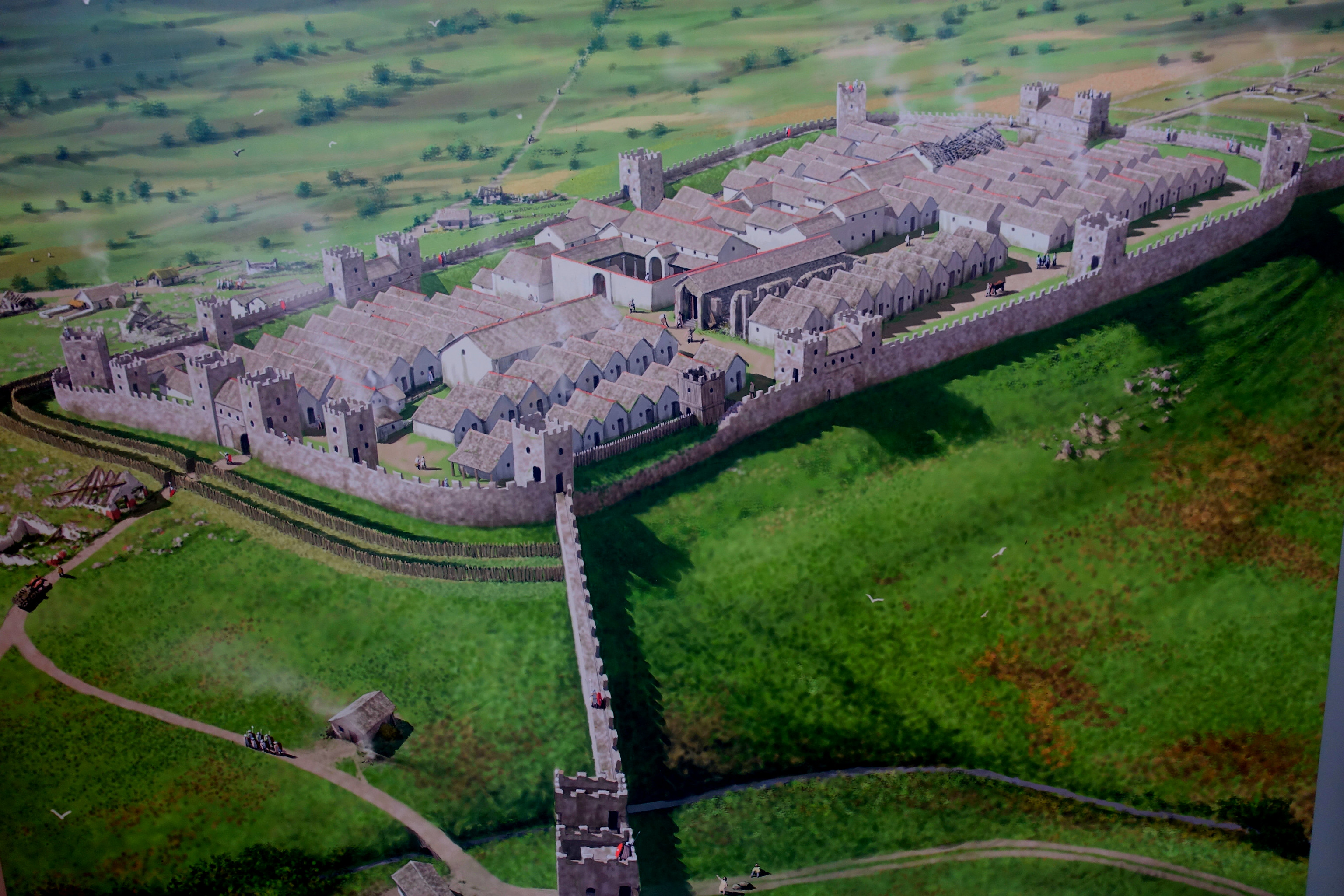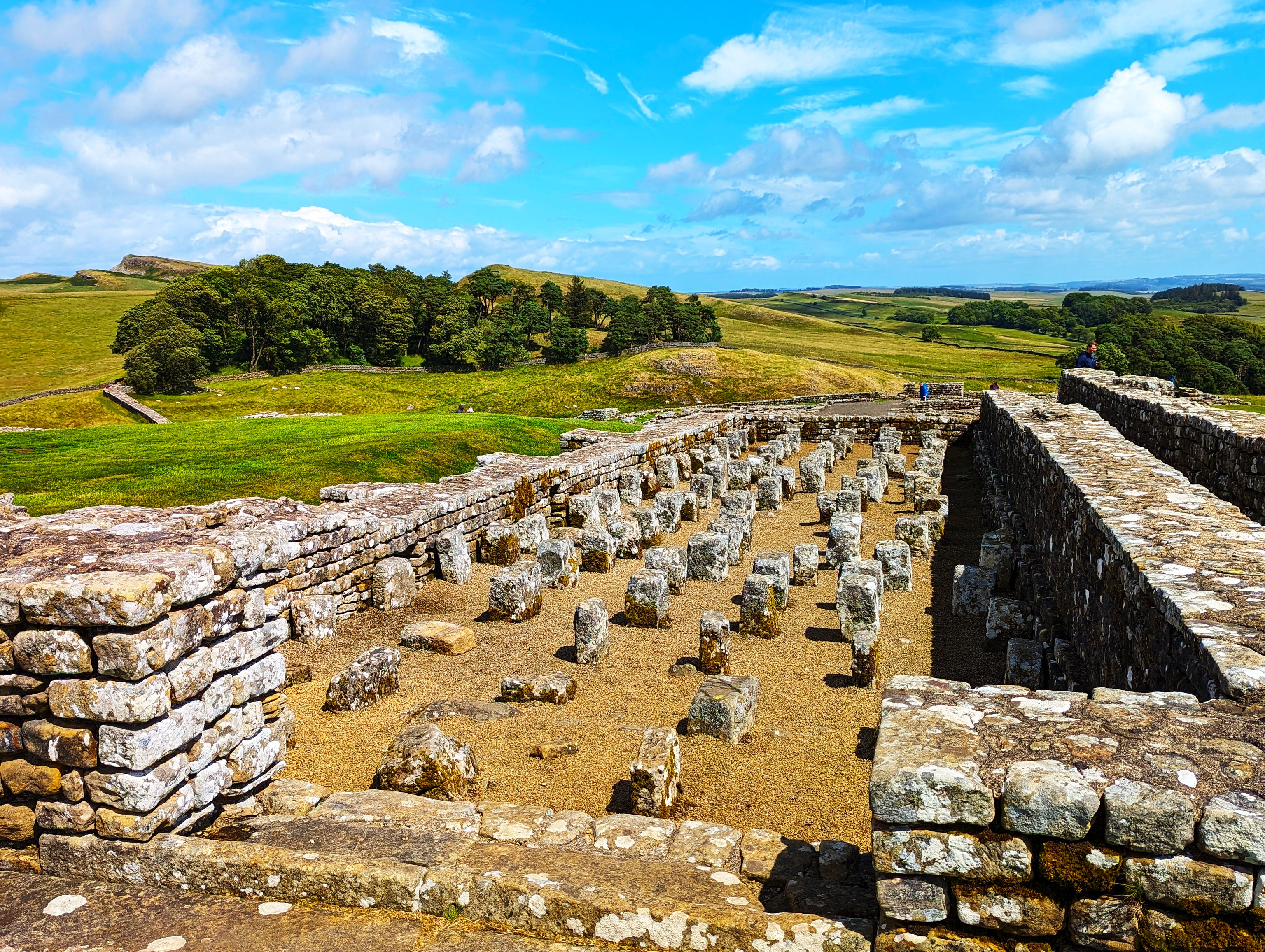Housesteads Roman Fort
View east from the fort with Hadrian's Wall (remains of) visible in top centre of the image.
This afternoon, I indulged my passion for the Roman period in Britain by paying a visit to the Housesteads site on Hadrian's Wall in northern England. To put this in perspective, for a period of nearly 300 years the Wall formed the North-West frontier of the Roman Empire.
Housesteads fort was begun c. AD124 and occupied for about 280 years by up to 800 auxiliary soldiers.For much of the time the fort was served by a vicus (see below) plus an extensive field system for growing produce and pasturing animals.
Below is an artist's impression of the fort in the late 4th century AD. This features new chalet barracks, new towers erected on the defences and abandonment of the adjacent vicus (civilian settlement) probably due to deteriorating safety and security concerns.
My visit coincided with very strong, blustery winds which were exacerbated by the exposed postion of the fort on a high ridge.
Video clip
Hadrian's Wall was a major feat of engineering; it was 73 miles (80 Roman
miles) long and stretched from coast to coast in what is now England. It
is not now nor never has been the boundary between England and
Scotland. During the Roman occupation the tribes in what is now Scotland
came under the umbrella of indigenous people known as Picts (or painted
people).
There were 13 primary forts along Hadrian's Wall of which Housesteads
(Vercovicium) is one of the best preserved and very popular with
visitors, notwithstanding it's exposed position.
Housesteads covers 2.2 hectares and was garrisoned by auxiliaries –
infantry and cavalry raised from the conquered peoples of the empire. It
held an infantry regiment of 800 men, known as a milliary cohort. It was known to have been garrisoned by the Cohors I Tungrorum (‘first cohort of Tungrians’) for a period. This unit of
auxiliaries was originally recruited from German-speaking tribes in the
district of Tongres, in modern Belgium.
- Commanding Officer's House
- Headquarters Building
- Hospital
- Granaries
- Wall Turret
- North Gate
- Barrack blocks
- Storeroom
- East Gate
- An elaborate and well preserved latrine.
- West Gate.
Wind-battered grass and view S.E.








Comments
Post a Comment